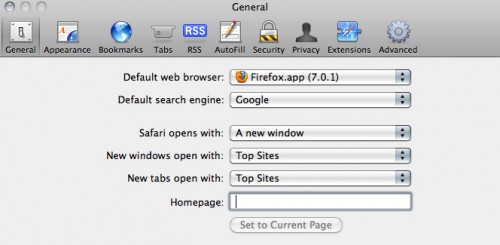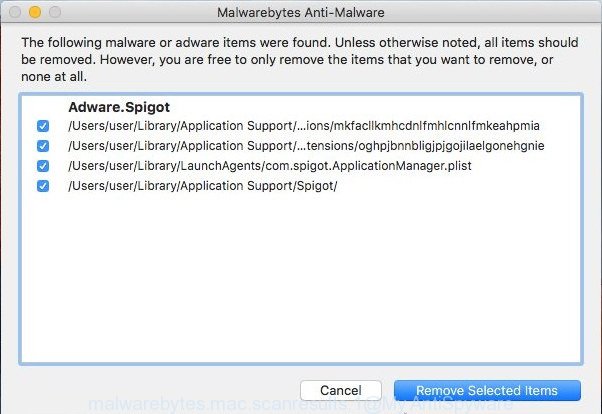What is ExtendedProcesser
According to security specialists, ExtendedProcesser is a PUP (potentially unwanted program) that falls under the category of Adware . Adware is short for ‘ad supported’ software. Additionally, some malware has adware software built into the program. Adware presents undesired ads that appear in unclosable windows or sponsored links on computer screens. In order to show unwanted adverts as often as possible adware can modify your browser settings. You may even find that your computer settings are replaced without your knowledge. The developers of adware do so in order to earn profit via third-party ad network. Thus every your click on the adverts makes revenue for them.

Unwanted ads
Another reason why you need to remove ExtendedProcesser is its online data-tracking activity. It can be used to collect lots of your user data (your ip address, what is a web page you are viewing now, what you are looking for on the World Wide Web, which links you are clicking), which can later transfer to third parties.
In the few simple steps below, we will explain useful methods on how to delete ExtendedProcesser adware from your computer and clean your web-browser of annoying ads.
How does ExtendedProcesser get on your MAC system
Adware may be spread with the help of trojan horses and other forms of malicious software, but most often, adware is bundled within certain free applications. Many developers of free applications include additional programs in their installation package. Sometimes it is possible to avoid the installation of any adware: carefully read the Terms of Use and the Software license, choose only Manual, Custom or Advanced installation method, disable all checkboxes before clicking Install or Next button while installing new free applications.
Threat Summary
| Name | ExtendedProcesser, Extended Processer 1.0 app |
| Type | adware software, potentially unwanted program (PUP), pop up virus, popup advertisements, popups |
| Symptoms |
|
| Removal | ExtendedProcesser removal guide |
How to Remove ExtendedProcesser adware
There are several steps to removing the ExtendedProcesser , because it installs itself so deeply into MS Windows. You need to remove all suspicious and unknown apps, then get rid of malicious extensions from the Google Chrome, Safari and Mozilla Firefox and other browsers you have installed. Finally, you need to reset your web browser settings to get rid of any changes the adware has made, and then scan your computer with MalwareBytes to ensure the adware software is fully removed. It will take a while.
To remove ExtendedProcesser, use the steps below:
- How to delete ExtendedProcesser adware without any software
- Automatic Removal of ExtendedProcesser
- How to stay safe online
- Finish words
How to delete ExtendedProcesser adware without any software
First try to remove ExtendedProcesser adware manually; to do this, follow the steps below. Of course, manual adware removal requires more time and may not be suitable for those who are poorly versed in computer settings. In this case, we suggest that you scroll down to the section that describes how to remove adware software using free utilities.
Delete potentially unwanted software through the Finder
The process of adware removal is generally the same across all versions of Mac OS. To start with, it is necessary to check the list of installed apps on your Apple Mac and delete all unused, unknown and dubious apps.
Open Finder and click “Applications”.

Very carefully look around the entire list of applications installed on your MAC. Most probably, one of them is the ExtendedProcesser adware. If you have many applications installed, you can help simplify the search of malicious applications by sort the list by date of installation.
Once you’ve found a questionable, unwanted or unused application, right click to it and select “Move to Trash”. Another solution is drag the program from the Applications folder to the Trash.
Don’t forget, select Finder -> “Empty Trash”.
Delete ExtendedProcesser adware software from Safari
The Safari reset is great if your web browser is hijacked or you have unwanted add-ons or toolbars on your browser, that installed by an malicious software.
Click Safari menu and select “Preferences”.

It will open the Safari Preferences window. Next, click the “Extensions” tab. Look for unknown and suspicious extensions on left panel, select it, then click the “Uninstall” button. Most important to delete all unknown extensions from Safari.
Once complete, click “General” tab. Change the “Default Search Engine” to Google.

Find the “Homepage” and type into textfield “https://www.google.com”.
Remove ExtendedProcesser adware from Chrome
If you have adware problem or the Chrome is running slow, then reset Google Chrome settings can help you. In the steps below we will show you a method to reset your Google Chrome settings to original settings without reinstall. This will also help to remove ExtendedProcesser ads from your internet browser.

- First run the Chrome and click Menu button (small button in the form of three dots).
- It will open the Google Chrome main menu. Select More Tools, then click Extensions.
- You’ll see the list of installed addons. If the list has the add-on labeled with “Installed by enterprise policy” or “Installed by your administrator”, then complete the following guide: Remove Chrome extensions installed by enterprise policy.
- Now open the Chrome menu once again, click the “Settings” menu.
- You will see the Google Chrome’s settings page. Scroll down and click “Advanced” link.
- Scroll down again and click the “Reset” button.
- The Google Chrome will open the reset profile settings page as on the image above.
- Next click the “Reset” button.
- Once this task is done, your browser’s start page, search engine and newtab page will be restored to their original defaults.
- To learn more, read the post How to reset Chrome settings to default.
Remove ExtendedProcesser adware from Mozilla Firefox
Resetting your Mozilla Firefox is good initial troubleshooting step for any issues with your browser application, including the ExtendedProcesser ads. When using the reset feature, your personal information like passwords, bookmarks, browsing history and web form auto-fill data will be saved.
First, start the Firefox and click ![]() button. It will display the drop-down menu on the right-part of the web browser. Further, click the Help button (
button. It will display the drop-down menu on the right-part of the web browser. Further, click the Help button (![]() ) as shown on the image below.
) as shown on the image below.

In the Help menu, select the “Troubleshooting Information” option. Another way to open the “Troubleshooting Information” screen – type “about:support” in the web-browser adress bar and press Enter. It will show the “Troubleshooting Information” page as on the image below. In the upper-right corner of this screen, click the “Refresh Firefox” button.

It will open the confirmation dialog box. Further, click the “Refresh Firefox” button. The Firefox will begin a process to fix your problems that caused by the ExtendedProcesser adware software. When, it’s done, click the “Finish” button.
Automatic Removal of ExtendedProcesser
Spyware, adware, potentially unwanted applications and browser hijackers can be difficult to delete manually. Do not try to remove this apps without the help of malware removal tools. In order to fully remove adware from your Apple Mac, run professionally designed tool such as MalwareBytes AntiMalware.
Automatically get rid of ExtendedProcesser adware with MalwareBytes
Manual ExtendedProcesser adware removal requires some computer skills. Some files that created by the adware software may be not fully removed. We advise that use the MalwareBytes that are fully free your Apple Mac of adware. Moreover, this free utility will allow you to delete hijacker, malicious software, PUPs and toolbars that your Apple Mac can be infected too.

- Visit the following page to download MalwareBytes Free.
Malwarebytes Anti-malware (Mac)
21160 downloads
Author: Malwarebytes
Category: Security tools
Update: September 10, 2020
- After the downloading process is finished, close all applications and windows on your Apple Mac. Open a file location. Run the downloaded file and follow the prompts.
- Click the “Scan” button to perform a system scan with this tool for the ExtendedProcesser adware. Depending on your MAC OS, the scan can take anywhere from a few minutes to close to an hour. During the scan MalwareBytes Free will scan for threats present on your MAC OS.
- When MalwareBytes is done scanning your computer, MalwareBytes Free will create a list of unwanted applications and adware software. Next, you need to click “Remove Selected Items”.
How to stay safe online
Use an adblocker utility such as AdGuard will protect you from harmful ads and content. Moreover, you can find that the AdGuard have an option to protect your privacy and stop phishing and spam web-sites. Additionally, adblocker software will help you to avoid annoying ads and unverified links that also a good way to stay safe online.

Installing the AdGuard is simple. First you’ll need to download AdGuard on your computer by clicking on the link below.
3882 downloads
Author: © Adguard
Category: Security tools
Update: January 17, 2018
After downloading is done, run the downloaded file. The “Setup Wizard” window will show up on the computer screen.
Follow the prompts. AdGuard will then be installed. A window will show up asking you to confirm that you want to see a quick instructions. Click “Skip” button to close the window and use the default settings, or press “Get Started” to see an quick guidance that will allow you get to know AdGuard better.
Each time, when you launch your Apple Mac, AdGuard will start automatically and stop undesired advertisements, block malicious and misleading web-sites.
Finish words
Once you’ve complete the instructions above, your MAC system should be free from the ExtendedProcesser adware and other malware. The Safari, Mozilla Firefox and Google Chrome will no longer display any unwanted ads. Unfortunately, if the instructions does not help you, then you have caught a new adware software, and then the best way – ask for help here.


















